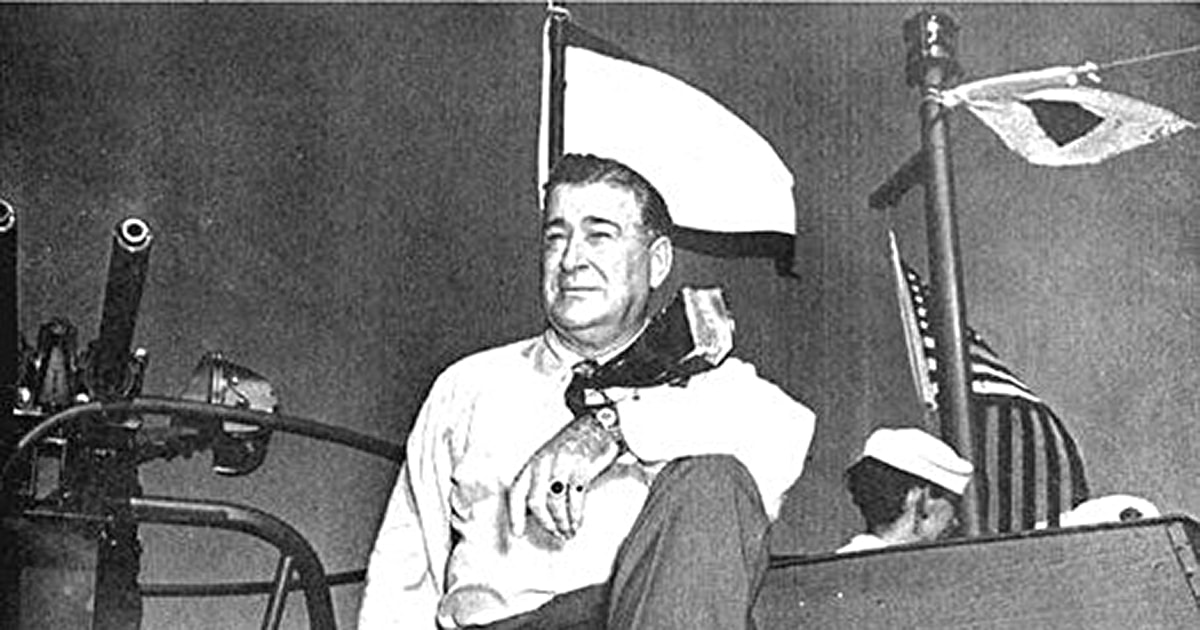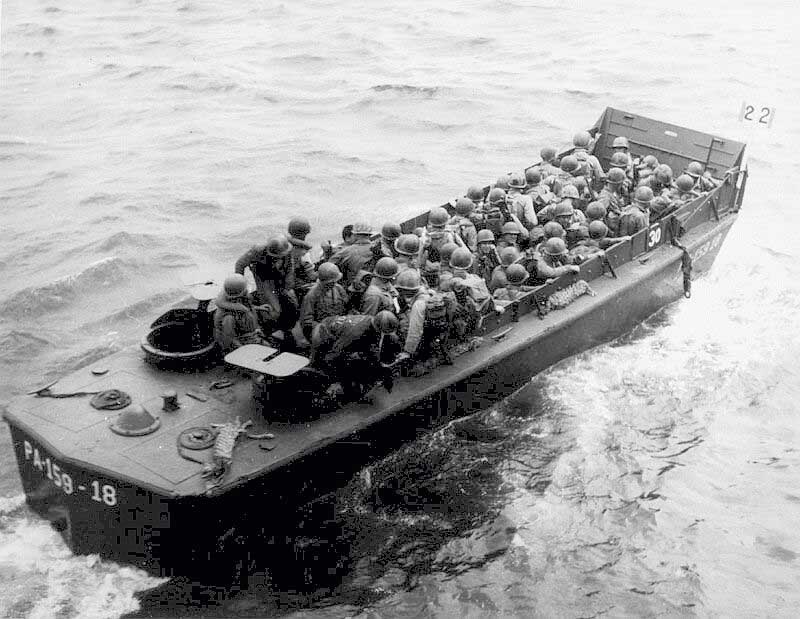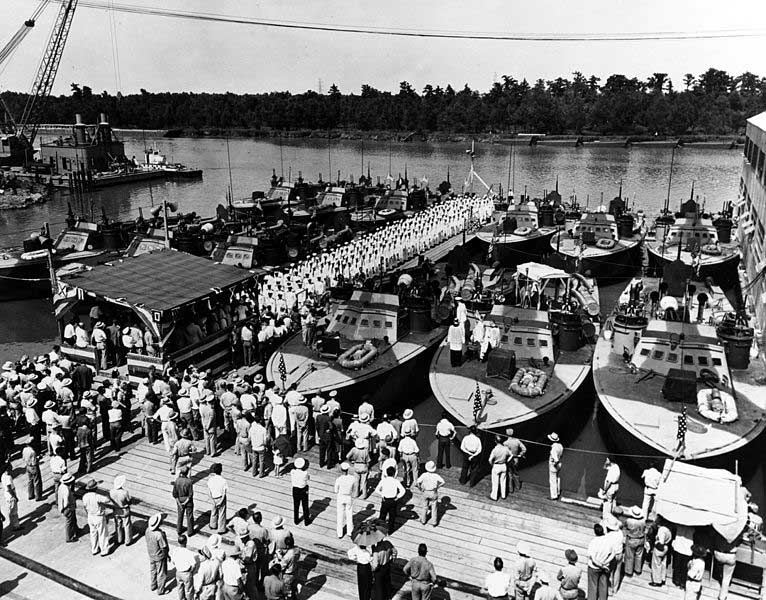The family of Andrew Higgins, the boat designer who has been credited for winning WWII, have long time ties to Bay St. Louis.
- Story by Dena Temple
He later moved to Mobile and worked in the lumber and boat building industries before opening his own lumber import/export business.
Higgins established a shipyard to service his own fleet, and while intense competition put his lumber company out of business, he retained the shipyard and established a shipbuilding business, drawing on his past experience. In 1926 Higgins designed the Eureka boat, a craft designed for use for oil and natural gas exploration in shallow waters. It featured a "spoonbill" bow design that allowed it to be run onto riverbanks. This design captured the interest of the US Navy and Marine Corps, who needed a better boat for beach landings. With modifications to allow large numbers of troops to deploy at once via the bow (rather than over the sides), the LCVP (Landing Craft, Vehicle, Personnel), nicknamed the “Higgins boat,” was born. It could carry 36 soldiers, and over 23,000 boats were produced during World War II at Higgins’s shipyard in New Orleans. Wikipedia sums up its importance: “With the help of the Higgins boat, armies could unload across open beaches instead of at ports, which were heavily guarded. This allowed the troops to spread out and attack from a wide range of areas. These tactics were utilized for many Allied operations, including the Normandy landings.”
Higgins Industries became one of the world’s largest manufacturers, and the company employed over 25,000 people at nine plants at the height of military production. Andrew Higgins prided himself in a diverse workforce, employing many women and people of color, at a time when African-Americans were not largely integrated in the workforce.
In addition to his LCVP landing craft, Higgins Industries also produced aircraft (by acquiring Tucker Aviation from inventor Preston Tucker) and Motor Torpedo (PT) Boats. He also built an aircraft manufacturing facility in Michoud, Louisiana, that later became NASA’s Michoud Assembly Facility for Saturn V rockets. The story of Andrew Jackson Higgins might have slipped into obscurity had it not been for author, history professor and historian Stephen Ambrose, biographer of President Dwight D. Eisenhower and author of the book, D-Day: June 6, 1944.
Eisenhower told Ambrose about Higgins’s contribution to the war effort, calling him “the man who won the war for us,” since troop deployment on the beaches of Europe using Higgins’s boats played a key role in defeating the German forces in Europe.
Ambrose decided that this story was too important to be lost and enlisted the help of local politicians in New Orleans to create a national D-Day Museum, which opened in 2000. The museum focused on the amphibious invasion at Normandy and how it facilitated the German defeat. The United States Congress awarded the museum the designation of "America’s National World War II Museum” in 2003, and its scope has significantly expanded to offer information and exhibits on all facets of the war, from all branches of the military and both the European and Pacific theaters of battle. According to the museum’s website, it offers “a compelling blend of sweeping narrative and poignant personal detail, [with] immersive exhibits, multimedia experiences, and an expansive collection of artifacts and first-person oral histories, taking visitors inside the story of the war that changed the world.” In fact, PT-305, the National World War II Museum’s fully restored Higgins patrol-torpedo boat, was brought to Bay St. Louis last year as a floating exhibit. Read about it here, and see photos here. The story of Andrew Jackson Higgins will never be forgotten, thanks to Stephen Ambrose. Comments are closed.
|
Categories
All
Archives
July 2024
|
Shoofly Magazine Partners
Our Shoofly Partners are local businesses and organizations who share our mission to enrich community life in Bay St. Louis, Waveland, Diamondhead and Pass Christian. These are limited in number to maximize visibility. Email us now to become a Shoofly Partner!
































 RSS Feed
RSS Feed























